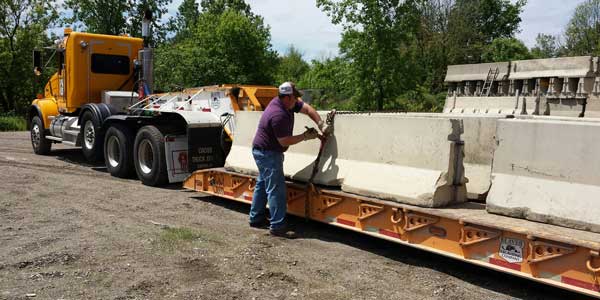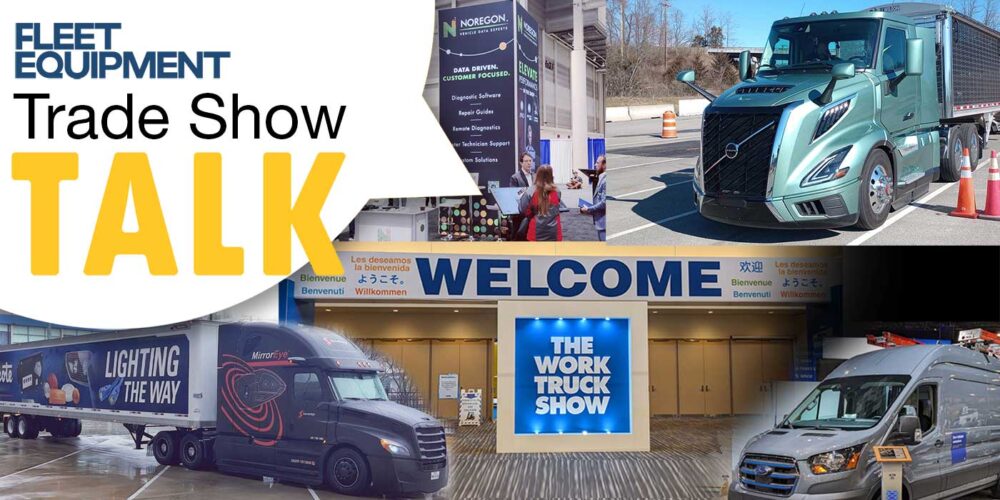Heavy-haul trailers see it all—rocks, ruts, bumps and jolts. It all translates to an increased risk of damage. The following conversation, between Troy Geisler, vice president of marketing and sales for Talbert Manufacturing and Lloyd Hair, director of maintenance for Keen Transport, outlines some things to keep in mind when hitting the road with the load.
1. What are the key areas drivers should regularly inspect on heavy haul trailers?
Troy Geisler: Owners should conduct a pre-trip inspection of the trailer and key wear parts before taking off with each load. This includes looking at the brakes as well as ensuring the tires are in good condition and properly inflated to the right PSI. Also, check hydraulic hoses for damage or cracks, which could cause the system to fail if a leak occurs. When it comes to detachable and rear-load models, maintaining proper hydraulic pressure is another important aspect to keep in mind regardless of whether the system is self-contained or a wet line. This ensures proper operation of the components and reduces potential for overheating or other issues caused by low hydraulic fluid.
In addition, walk around the trailer and inspect the frame, chains and straps for damage. Trailers see a lot of use and abuse, particularly in harsher weather conditions, so repairs or replacements could be needed sooner rather than later. Keeping an eye on these components and replacing any that begin to show wear will help keep your trailer ready when you need it.
Lloyd Hair (LH): It’s critical to establish a preventative maintenance program that includes lubrication intervals to prevent wear and ensure that the brakes and components operate correctly. A good maintenance program will reduce breakdowns and increase the life of the trailer.
Use dielectric grease on lighting connections, electrical components, lights and lighting harnesses to reduce corrosion. Brakes, cams and slack adjusters need to be lubricated. Always refer to the manufacturer’s recommendations and grease guidelines. Owners should also inspect their trailers for damage to the structure and make repairs as soon as possible to extend the life of the trailer.
Geisler: Keep wear components in mind when purchasing a trailer. Models made with high-quality materials and finishes will last longer than those with traditional paints and standard materials. Select units with high-strength steel, such as 12-in. deep I-beams with a minimum yield strength of 100,000 PSI, for long-term durability. Choose a trailer with premium primer and topcoat finishes. Choosing quality from the beginning ensures you’ll have a trailer that looks great for years to come and will, as a result, have a higher resale value.
2. Which parts wear fastest and how can fleet owners minimize or prevent this wear?
Geisler: Because of the sheer amount of use, parts such as wheel ends, tires and brakes will wear faster and need to be replaced sooner than other trailer components. But, there are things you can do to get the greatest longevity out of these features.
Hair: Regularly check tire pressure and keep them properly inflated, either manually or with an automatic tire inflation system. Traveling with underinflated tires is one of the biggest culprits of premature wear, so keeping them properly inflated will allow them to last longer and boost fuel efficiency.
In addition to keeping tires inflated, it’s just as important to replace them when they become worn to avoid a blowout and downtime. Always select the right size and rating to ensure optimal performance and keep tire pressure equalized for the greatest longevity.
Geisler: Wheel-ends can also wear quickly and must stay lubricated to prevent gear oil leakage and ensure proper and safe operation.
Trailers haul some heavy loads, so it’s no wonder brakes are also among the top components that can wear the fastest. They take a beating and will need to be replaced depending on use. To get the most longevity out of your trailer brakes, ensure you follow the right loading capacity for the trailer. Overloading or unbalancing loads will put added stress on the brakes, causing them to wear much faster. Proper loading techniques also go a long way toward preventing premature trailer wear, so be sure to follow the right recommendations for your type of trailer and equipment.
Hydraulic cylinders should also be fully retracted when not in use to minimize exposure of the stainless steel rams to the elements and maximize their longevity.
3. What should fleet owners keep in mind when implementing a preventive maintenance plan?
Hair: One of the best ways to see a direct reflection of the success of your maintenance program is through the Commercial Vehicle Safety Alliance’s inspection program. The nonprofit organization scores commercial motor vehicles based on inspection procedures and CVSA criteria — the lower the number the better.
Trailer fleet owners should also match their equipment needs to a maintenance schedule. For example, will the trailer need to be on the road all the time or will it sit idle for longer periods of time? Developing a preventative maintenance program that aligns with an owner’s business needs will optimize longevity of trailers and their components. It also will enhance safety.
Get to know the trailer components and which ones work best for your operation. Oftentimes manufacturers are happy to answer questions and provide the best recommendations based on your specific needs and applications.
Geisler: Proper record keeping is also important so you know when preventative maintenance is needed and what has already been done. This helps your operation optimize efficiency and prevent any small issues from becoming larger headaches down the road. Putting proper procedures in place will keep appropriate personnel accountable for performing the maintenance when needed.
Trailer owners should also ensure anyone involved with any aspect of the trailer’s use has proper training, not only to prevent damage to the trailer, but also for their safety and the safety of others.
Hair: Drivers and maintenance technicians should have open lines of communication in regard to trailer issues or required maintenance. This will ensure the right kind of maintenance is performed and that it’s done in a timely manner.
Having mechanics who are well-trained on maintaining heavy-haul trailers is a good way to ensure the maintenance your company is doing is the right type of maintenance.
This article was contributed by Talbert Manufacturing.














